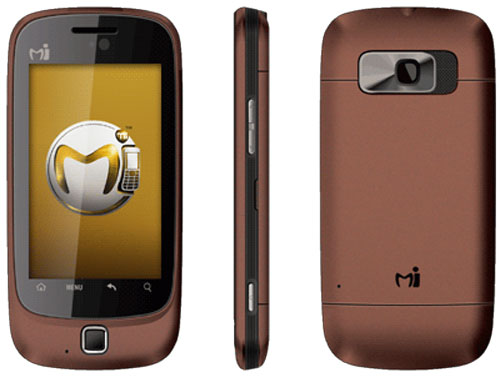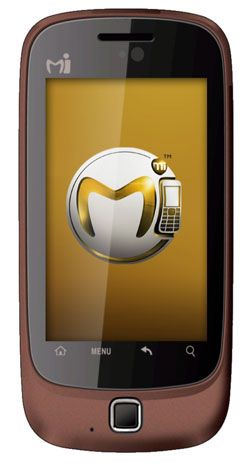
Despite its distinctly average display, lack of haptic screen feedback and appalling camera shutter sound, the Mi-Fone Mi-A300 may be the most exciting Android phone to pass through the TechCentral office all year for one very simple reason: it’s amazingly cheap without the nastiness that usually brings with it.
At about R1 600, the Mi-A300 is a touch-screen smartphone with most of the functionality on a far more expensive device. It has Bluetooth, GPS and Wi-Fi, runs Android 2.2 (Froyo), supports microSD cards, and includes a camera — albeit a poor one.
In spite of its price, the Mi-A300 doesn’t feel nearly as cheap as it is. The housing is metal and the screen is surprisingly responsive. There’s also a touch-sensitive four-way controller/trackpad beneath the screen of the sort found on the BlackBerry Curve 8520.
There are a few welcome additions Mi-Fone has made to the Android interface, including a mobile data switch alongside the conventional Wi-Fi, GPS and orientation-lock buttons that are accessed via the notifications menu. Clearly, Mi-Fone really does have the African user in mind.
Though the 2-megapixel camera is uninspiring, lacks a flash and makes a terribly loud tearing noise when the shutter is released — which can’t be turned off in the settings menu — the 1600×1200-pixel images it produces in daylight are by no means unusable. Besides, if you’re buying a R1 600 smartphone it’s not because you’re looking for an outstanding camera.
There’s also no haptic feedback for the onscreen keyboard, despite there being some for menu selections, and in regular orientation the keyboard can seem a little cramped on the 3,2-inch HVGA screen. But all of these are minor concerns when you consider that the handset offers most of the functionality normally only found on a phone that costs at least twice as much.
 The screen automatically rotates thanks to built-in sensors and there’s even an ambient light sensor for automatically adjusting screen brightness to conserve battery.
The screen automatically rotates thanks to built-in sensors and there’s even an ambient light sensor for automatically adjusting screen brightness to conserve battery.
Though the Mi-300 is a single-Sim device, Mi-Fone also makes a range of dual-Sim offerings to cater to users who like to use multiple networks to take advantage of special offers like reduced off-peak rates or cheaper calls to phones on the same network.
Mi-Fone has offices and service centres in Johannesburg, Nairobi and Mauritius. Although the company is only three years old, its handsets are available in a dozen countries worldwide, mainly in Africa.
The company has partnered with a company called Stereotype Records and a mobile store, Spinlet, to bring music content to users’ devices. It says it hopes to use the platforms to promote local music in the regions where its devices are available to provide users with content and artists with revenue.
Some might dismiss handsets like the Mi-A300 as poor imitations of higher end devices, but those aren’t the people Mi-Fone is targeting. When one realises that for many Africans a mobile phone will be their first experience of the Internet, devices like the Mi-A300 suddenly seem not only valuable, but essential.
The Mi-A300 ticks all of the necessary boxes to be deemed a smartphone but has the added advantage of a smart price. It’s a great little device. Big-name manufacturers like Nokia, which remain popular in emerging markets, should be worried. — Craig Wilson, TechCentral
- Subscribe to our free daily newsletter
- Follow us on Twitter or on Google+ or on Facebook
- Visit our sister website, SportsCentral (still in beta)


